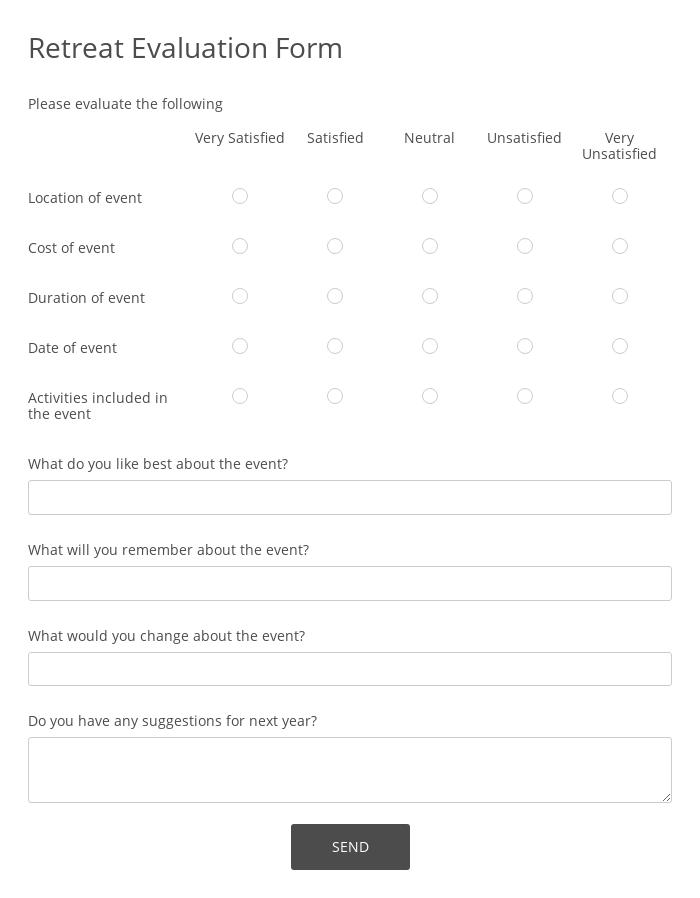Ever wish you could hit the pause button on the daily grind and escape with your colleagues to recharge, refocus, and reignite that team spirit?
Does the idea of spending time with your workmates in a different and more laid-back atmosphere spark your interest?
A corporate retreat is the way to achieve all that and more. It's the secret weapon to transforming work relationships, boosting morale, and bringing fresh perspectives to the table.
Corporate retreats, also known as "offsites," vary in purpose from one company to another, but one thing's for sure, they leave employees feeling rejuvenated, reconnected, and ready to tackle new challenges.
Ideally, these retreats can last a day to several days depending on the nature of the retreat in the location in which it's to be held.

In this article, we will explore the steps involved in planning a corporate retreat, the best locations for corporate retreats, and budget-friendly corporate retreat ideas. First, let's delve into step-by-step corporate retreat planning to ensure a successful corporate retreat.
(1) Begin with an end in mind
The very first and most crucial step is to define a goal for your company retreat. This is normally provided in the corporate retreat agenda. A company retreat that begins by establishing its desired outcomes gives the team an idea of how to achieve the objectives.
Having considered the goal of the retreat it is easier to factor in important aspects of the retreat such budget friendly corporate retreat ideas, and to compile a retreat planning checklist. This will save time and allow effective corporate event management.

(2) Finding the best locations for corporate retreats
Having established the objectives of the retreat the organizers can now focus on finding locations that would be best suited for the retreat for corporate offsite planning. The surroundings will determine how the retreat turns out. Of course, a location that is easy on the eye is an important factor, however, it is not the only thing to consider when choosing a location for retreats.
The locations should be easy to find, encourage socializing, and have facilities that cater to everyone. It also helps to consider corporate retreat activities for team building that are likely to happen.

(3) Allocate ample time for all activities
Having to skip certain activities in favor of others is a sign of poor planning. A corporate retreat planning checklist that provides what to include in a corporate retreat agenda is an important tool to ensure that there is ample time for each and every activity that is scheduled to take place on the retreat.
Company bonding activities are great but can be given more importance than team-building retreat activities which give teams a chance to interact more closely. Forfeiting these activities would defeat the purpose of the exercise and hinder a successful corporate retreat.
(4) Include fun company offsite ideas for a company retreat
An ideal company retreat is one in which people feel relaxed and comfortable in their own skin. After a lot of care has been taken and selecting the location of the corporate retreat, it is important to include activities that are purely for fun. This might be tricky for remote teams but thanks to technology there are tips for planning a corporate retreat for remote teams.
A corporate getaway should allow employees to break away from routine and enjoy fun activities. Some of the budget-friendly corporate retreat ideas are game nights, wine tasting, and group activities. Include activities that are likely to include everyone which brings us to the next step of planning a successful corporate retreat.

(5) Promoting inclusivity in corporate getaways
In every group of people who are thrilled at the prospect of attending a company retreat, there are some who are nervous about the new environment and might need plenty of space to recharge their batteries and adjust accordingly.
Corporate event planning should take into account the needs of different people in terms of diet, activities, and ideas. Corporate event management is not a one-man show and is best handled by a committee to ensure that diverse needs are represented. This will make the employee retreat inclusive and easily accessible to everyone.
(6) Proper communication of the plan and expectations
Taking people out of their comfort zones is an art that corporate retreats have mastered by including company bonding activities in their corporate getaways.
Corporate retreat ideas should be made accessible to the employees to ensure collaboration which is important for a successful corporate retreat.
The more you communicate beforehand, the more at ease people will be, and the business team-building retreat will yield as desired.
(7) Bring an expert on board
If you want to have the perfect corporate retreat, invest in an expert facilitator's services. These are neutral parties, and their input in corporate event management is highly recommended.
Executive retreat planning is an uphill task and an expert on the committee would be a worthwhile investment and contribute top corporate retreat activities for team-building and tips for planning a corporate retreat for remote teams.
(8) Take home action points at the end of the retreat
Do you know why having a goal in mind at the beginning is important?
At the end of the retreat, everybody should get together and exchange ideas on achieving the desired results of the business team-building retreat. If, for instance, the employee retreat sought to come up with ways to increase workplace productivity.
At the end of the retreat, the teams can discuss how various skills acquired during the retreat can help achieve this goal. It enables the teams in the employee retreat to stay committed to meeting the objective and shows them their input is valued.
(9) Get feedback from teams about the corporate retreat
After having the company retreat, conduct a survey to get the team's opinions about the retreat. These opinions will be a road map when planning your next company retreat. They will provide guidance on what to include in a corporate retreat agenda and offer suggestions on the best locations for corporate retreats.
The corporate retreat tips will be very helpful in planning future retreats and making teams look forward to them more.

